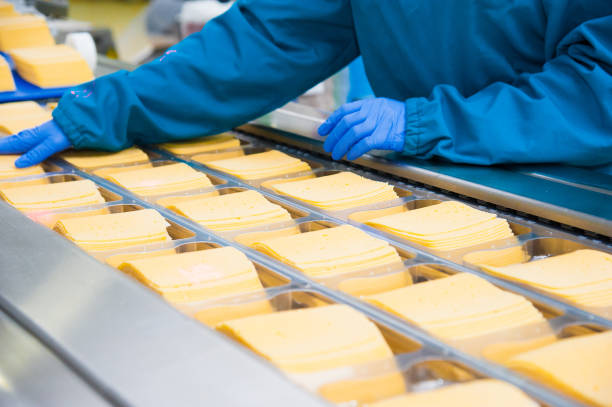See the Premier Cheese Store Melbourne for Exquisite Selections
See the Premier Cheese Store Melbourne for Exquisite Selections
Blog Article
Understanding the Science Behind Cheese Production: From Milk Option to Last Item
The elaborate procedure of cheese production begins with the mindful selection of milk, an option that exceptionally impacts the end product's flavor and structure. Understanding the pivotal duty of bacteria in fermentation reveals just how these microorganisms transform lactose into lactic acid, an essential active ingredient in creating the cheese's personality. Following this, the coagulation procedure transforms liquid milk right into curds, setting the phase for aging, where real complexity of tastes arises. Quality assurance stays crucial at every stage, yet the subtleties of these procedures might still hold shocks that merit further expedition.
Milk Selection Process
The choice of milk is an important step in the cheese production procedure, as it directly influences the taste, texture, and top quality of the end product. Different elements must be considered throughout this option, including the resource of the milk, the type of the animals, and their diet. Cow's milk, goat's milk, and lamb's milk each have distinct residential properties that add to the special qualities of different cheese selections.

Furthermore, the dietary content of the milk, affected by the animal's diet regimen, can modify celebrity's final qualities. Top notch milk, sourced from healthy animals, makes sure a superior cheese item, emphasizing the value of rigorous quality control actions in the milk choice procedure. Hence, mindful factor to consider in milk selection is important for effective cheese production.

Duty of Germs in Fermentation
Following the careful selection of milk, the fermentation procedure plays a pivotal role in cheese manufacturing, where microorganisms are presented to transform the milk right into cheese. The main function of these bacteria is to transform lactose, the sugar present in milk, right into lactic acid. This acidification not just changes the pH of the milk however likewise plays an essential duty in taste growth, texture, and conservation of the end product.
Lactic acid germs (LABORATORY), such as Lactococcus and Streptococcus varieties, are generally used in cheese manufacturing because of their capacity to thrive in milk and their payment to the fermentation process. The metabolic tasks of these bacteria cause the manufacturing of numerous metabolites, consisting of taste substances and antimicrobial materials, which hinder spoilage organisms and pathogenic microorganisms, therefore enhancing cheese safety.
Furthermore, the fermentation procedure affects the general characteristics of the cheese, including its scent, preference, and appearance. Various pressures of bacteria can give distinctive flavors and add to the one-of-a-kind accounts of different cheese kinds. Therefore, the selection of bacterial cultures is a vital action in accomplishing the preferred cheese quality and consistency.
Coagulation and Curd Development
In the cheese manufacturing procedure, coagulation marks a critical change from fluid milk to strong curds. This procedure is typically matched by the acidic environment produced by lactic acid microorganisms, which better aids in coagulation by lowering the pH of the milk.
The resulting curds are developed as the fluid whey begins to divide. Aspects such as temperature, the quantity of rennet utilized, and the moment permitted coagulation are essential in determining the structure and top quality of the curds. Greater temperatures and longer coagulation times generally produce firmer curds, suitable for harder cheeses.
When curds are formed, they are reduced right into smaller sized pieces, enabling whey to run away much more successfully. This action is important, as it influences read the moisture material and general attributes of the last cheese item. Correct management of coagulation and curd formation is crucial for accomplishing particular cheese designs and desired flavor accounts.
Aging and Taste Growth
After the curd has actually been formed and whey has been drained, the next phase in cheese why not try here production is maturing, also called growth. This critical procedure considerably influences celebrity's last flavor, structure, and fragrance. During aging, numerous biochemical and microbiological changes happen, influencing the total sensory profile.
The aging environment, including temperature and moisture, plays an essential function in flavor growth. Enzymes and bacteria existing in the cheese help with the malfunction of healthy proteins and fats into smaller sized particles, bring about the development of amino acids, fats, and volatile substances. These improvements add to the intricacy of taste and fragrance, with unique profiles arising based on the certain cheese variety.
In addition, the period of aging is pivotal; much shorter aging durations normally produce milder tastes, while longer maturation lead to more robust and nuanced accounts. Aspects such as the milk source, cheese type, and specific aging techniques even more boost the diversity of tastes generated. Ultimately, aging is a fragile balance of time, environmental problems, and microbial task, culminating in the one-of-a-kind attributes that define each cheese variety.
High Quality Control in Cheese Production
Making sure high requirements throughout celebrity manufacturing procedure is vital for delivering a high quality item that meets consumer assumptions - cheese store melbourne. Quality control (QC) encompasses various stages, beginning from raw milk choice to the last aging procedure. Each stage calls for meticulous attention to information to prevent contamination and ensure consistency
During milk choice, manufacturers need to analyze elements such as fat web content, pH levels, and microbial high quality. Regular testing for somatic cell matters and bacterial lots is important to make certain the milk's viability for cheese production. In the production phase, QC measures consist he has a good point of checking the temperature, level of acidity, and rennet task, which considerably affect appearance and flavor.
As cheese grows, continuous sensory analyses and laboratory analyses are performed to evaluate flavor advancement, texture, and overall high quality. Any kind of variances from established criteria demand corrective actions to keep item integrity.
Furthermore, documentation and traceability are important components of reliable quality assurance, making it possible for producers to track celebrity from ranch to consumer. By applying durable QC methods, cheese manufacturers can not only improve product quality yet likewise construct consumer depend on, guaranteeing their location in an open market.

Conclusion
In verdict, the scientific research of cheese production encompasses numerous critical points, each substantially influencing the last item. The mindful option of milk, the vital duty of germs in fermentation, the makeover of liquid milk right into curds through coagulation, and the aging procedure collectively add to the advancement of special flavors and textures. Moreover, rigorous quality assurance measures guarantee that each cheese variety satisfies recognized criteria, therefore improving customer satisfaction and keeping the honesty of the cheese-making custom.
Report this page